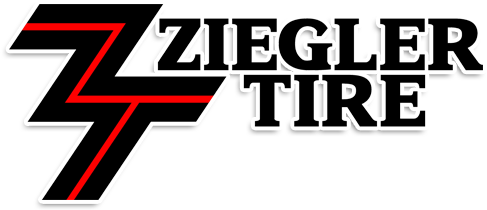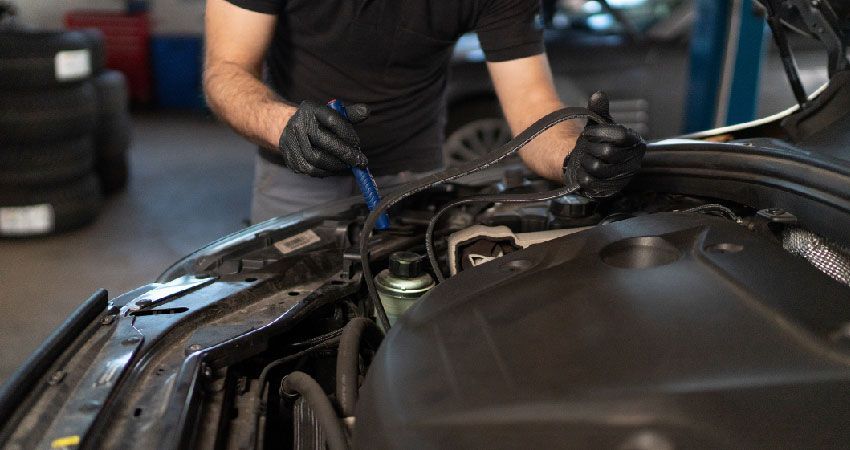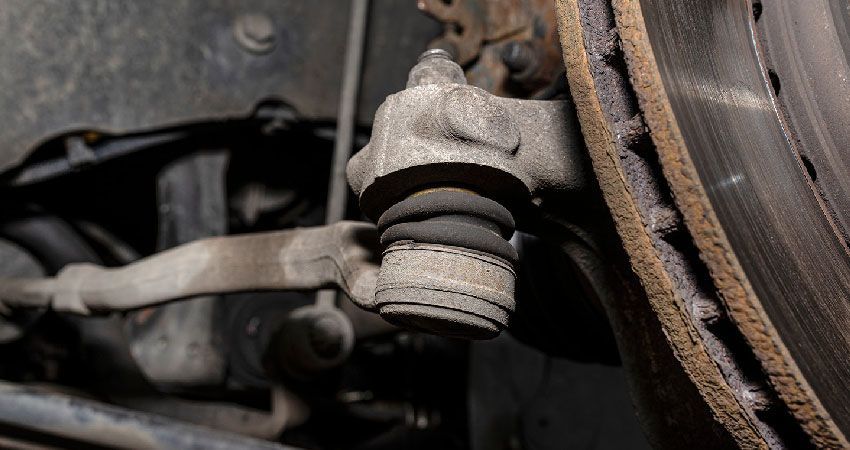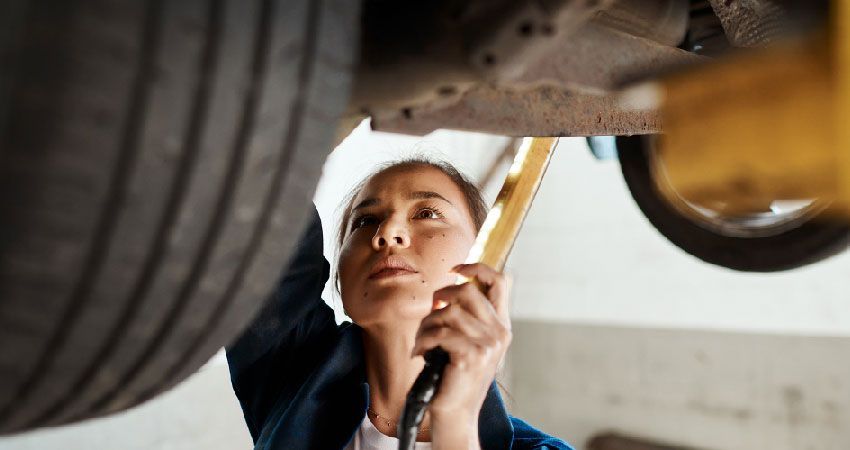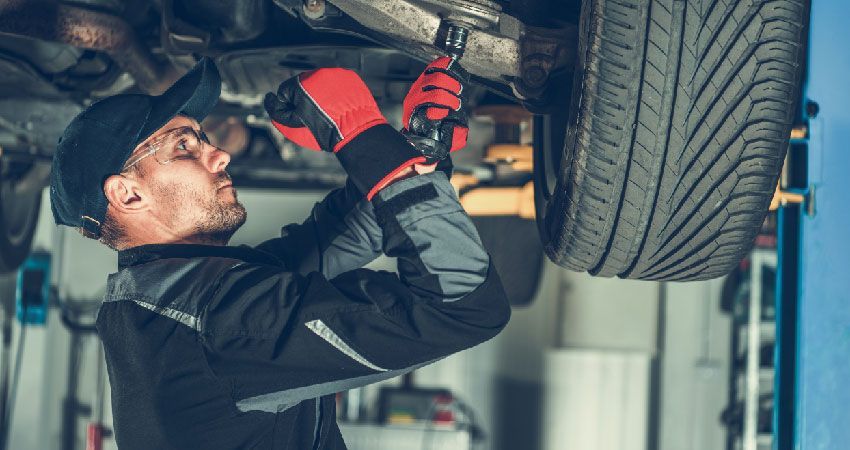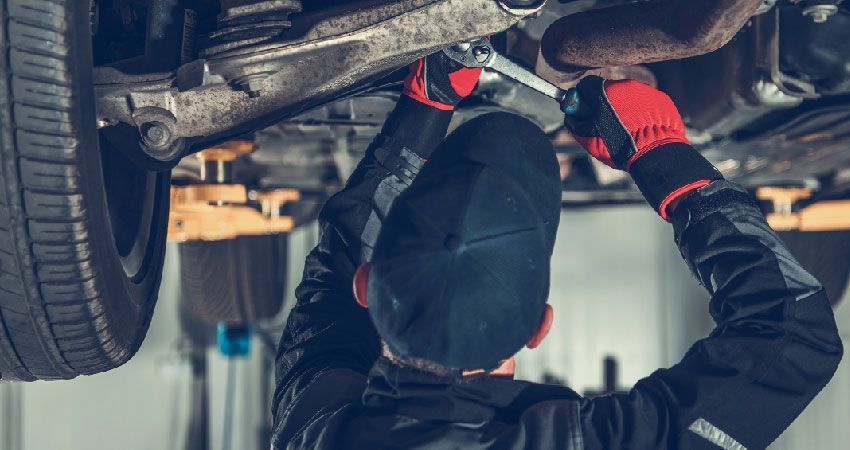
What is automatic transmission service?
There are two main differences between an automatic and manual transmission. In a manual transmission there is a clutch pedal and a gearshift, whereas an automatic transmission has neither. Automatic transmissions are very complex systems. Basically a transmission is responsible for transferring the power from the engine to the drive wheels, whether you have front- or rear-wheel drive. Transmissions allow an engine to operate at a few speeds or gears, while your vehicle can travel at a large range of speeds. There are many different parts in an automatic transmission including bands, clutches, a hydraulic system, and a gear pump, but it all starts with the planetary gear set. The planetary gear set creates all the different possible gear ratios your vehicle uses. The planetary gear set contains three parts: the sun gear, two or more planet gears and the planet gears’ carrier, and the ring gear. The sun gear is located in the center with each planet gear surrounding and in contact with it. Then the ring gear is surrounding and in contact with each of the planet gears. So, from inside out, it’s the sun gear, then planet gears, and then the ring gear. Each part can be one of three things: the input, output, or stationary. It is what role it has (input, output, stationary) that determines the gear sets’ gear ratio. In one of the planetary gear sets, the ring gear has 72 teeth and the sun gear has 30 teeth; so, there are thousands of possible gear ratios. To explain how different gear sets will change your vehicle’s gears and speeds, I will explain how your vehicle enters first gear, third (or above) gear, and reverse. For your vehicle to enter first gear, the ring gear will be the input, and the planet gears will be the output. The sun gear will remain stationary. What happens in first gear is the ring gear will be set in motion moving the planet gears around the stationary sun gear. In this instance, the output (planet gears) will move slower than the input (ring gear), which means that the gear ratio is a reduction. Another possible scenario includes unlocking the sun gear and locking any other two parts, meaning they are stationary. This will cause all three parts (ring gear, planet gears, and sun gear) to move at the same speed. This would mean that the input would be moving at the same speed as the output and that your vehicle is operating in third gear or higher. The last scenario involves keeping the planet gear stationary. Then, when the ring gear (input) is set in motion, it will force the sun gear (output) to move in an opposite direction, which will put your vehicle in reverse gear. Another very important part in automatic transmissions is the torque converter. The torque converter works just like the clutch in a manual transmission vehicle. Torque converters transmit the necessary power to the engine to keep it running while your vehicle is stopped. Torque converters also supply more torque to your wheels to allow your vehicle to speed up quicker after sitting still. In order to supply this power, torque converters use transmission fluid. Transmission fluid is used to lubricate, clean, and keep all of the moving parts in an automatic transmission cool. Transmission fluid is sent throughout a transmission by a complex hydraulic system. This hydraulic system is responsible for providing a constant supply of transmission fluid to the transmission and torque converter. The hydraulic system uses a pump, called the gear pump, to provide the necessary pressure to send the transmission fluid throughout the transmission. How we know how an automatic transmission works, we can discuss what occurs during an automatic transmission service. In order to keep your automatic transmission running as efficiently as possible, this necessary service is required. Over time, transmission fluid wears down and must be replaced. It is also important to change your transmissions’ filter and pan gasket.
Why do you need automatic transmission service?
Automatic transmission service is necessary in order to keep your transmission running smoothly and prevent it from failing. There are many things that can damage your transmission including overheating, hauling heavy loads, poor transmission fluid, and even a lack of supervision and maintenance. Since automatic transmissions are so complex, they are very expensive to replace, which makes it even more important to keep it in good condition.
Why do you need to service your automatic transmission?
You should have your automatic transmission serviced in accordance with your vehicle owner’s manual recommendation. There are also several things to watch for that will tell you your transmission should be serviced. You should occasionally check underneath your vehicle for any signs of leaking. The leaking may not be related to your transmission, but the transmission fluid should always be checked. You should also occasionally check your transmission fluid level and replace the fluid if it is too low or is too dark (transmission fluid should be red). If you experience any other problems with your transmission such as grinding noises or trouble shifting, you should have your automatic transmission serviced immediately to prevent your transmission from completely failing which would cause your vehicle to be inoperable.
What is a manual transmission service?
Whether you have front- or rear-wheel drive, transmissions are required to transmit the necessary power and torque from your engine to your vehicle’s drive wheels, Transmissions allow an engine to operate at a few speeds or gears, while your vehicle can travel at a large range of speeds. Each gear in a manual transmission has a maximum range of RPMs (revolutions per minute), referred to as a redline. Manual transmissions are very different than automatic transmissions. The most obvious differences include a manual transmission having both a clutch pedal and a gearshift or a stick shift, while automatic transmissions have neither. A manual transmission includes a clutch, gear selector fork, collars, and several gears and shafts. Compared to an automatic transmission, a manual transmission is very simple. There is one main shaft that supplies all of the power to the manual transmission. This initial shaft is powered and turned by the engine. The shaft travels through your vehicle’s clutch and is connected to a gear. A clutch is responsible for connecting or disconnecting the engine from the transmission. Since your engine is always running, your clutch must be engaged in order to stop your transmission from turning (this is why your clutch must be engaged when your vehicle is stopped and when you are shifting gears). Then, once your clutch is released, your engine is reconnected with the initial shaft and the transmission. When the engine is connected to the transmission (the clutch is released), the initial shaft’s gear is connected to another gear that powers the layshaft. The layshaft contains seven total gears that all turn as one. The first gear is connected to the initial gear and shaft mentioned above, and the six other gears are connected to gears corresponding to first through fifth gear and reverse. For the purpose of this service description, we will call these six other gears, which correspond to what gear your vehicle is in, shift gears. So far we know that the initial shaft and gear is connected to the layshaft, and then the layshaft’s gears are connected to the six shift gears.The six shift gears rotate around but are not connected to the transmission’s final shaft, which is connected to your vehicle’s drive wheels. What does connect the shift gears to the final shaft is one of three collars. These collars are directly connected to the final drive shaft and can move left or right to connect to a shift gear. Now, this is finally where your stick shift comes into play. The stick shift controls your transmission’s gear selector fork and tells the selector fork which collar to move and to which gear the collar will be attached. Each collar can connect to one of two shift gears: the first collar can connect to either the first or second shift gear, the second collar can connect to the third or fourth shift gear, and the third collar can connect to the fifth or reverse shift gear. Summing it all up, let’s say that you wanted to shift from third gear to fourth gear. First, you step on your clutch and move your stick shift from third to fourth gear. This will tell your transmission’s gear selector fork to move the second collar and connect it to the fourth shift gear. Then after you release your clutch, the engine will be reconnected to the transmission and the initial shaft will connect to, and turn, the layshaft. The layshaft will then continue to turn all of the shift gears, and since the collar is connected to the fourth shift gear, the fourth shift gear will turn the final drive shaft and power the drive wheels. However complicated it may seem, it is a very simple process. Now that we know how a manual transmission works, we can discuss what occurs during a manual transmissions service. In order to keep your manual transmission working as efficiently as possible, this necessary service is required. During this service, your transmission fluid will be drained and replaced.
Why do you need to service your manual transmission?
Since several gears and shafts power your manual transmission, it is very important to keep these parts lubricated and clean. Over time, transmission fluid can be polluted with small pieces of metal that fall off the transmission gears or by water. It is important to have the transmission fluid changed, so these tiny particles aren’t traveling through the fluid and damaging your transmission’s shafts and gears.
When do you need to service your manual transmission?
Manufacturers recommend that you have your manual transmission serviced every 30,000 to 60,000 miles depending on driving conditions. It is also recommended that you have your service technician check your transmission fluid each time you have your oil changed. Again, having clean transmission fluid is key to keeping your transmission running efficiently and extending its life.
